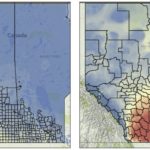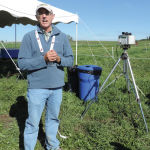
Southern Alberta could soon have Texas weather
Want to see the climate projections for your county? New online atlas predicts a sweltering future

Grasslands a carbon-capture colossus
Do the math: Take Alberta $15-per-tonne carbon tax and then look at how much carbon is stored in grasslands

Be bold and dream big, says legendary plant scientist
The father of farmers’ biggest money-maker says crop scientists are just getting started

The global weather stories of the year? Mine are heat and hurricanes
El Niño combined with ongoing global warming to set yet another temperature record and also fuelled major hurricanes and typhoons

Listening to the sounds of nature 24-7

Schoepp: What’s a more important sector: oil or agriculture?
Take a comprehensive look at the facts and the answer is obvious

We need a better approach to dealing with wildlife
Beef 911: Farming has created a great environment for wildlife but farmers are paying a steep price for the damage it causes

Cows that burp less could also save you money
Reducing methane from cattle means a reduction in greenhouse gases – and the key to that is feed efficiency
A new era of watchful food consumers
Consumers don’t just want to know more about how their food is produced — some want a very detailed report card

